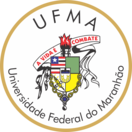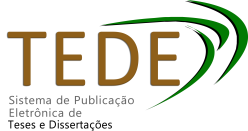| Compartilhamento |


|
Use este identificador para citar ou linkar para este item:
https://tedebc.ufma.br/jspui/handle/tede/6404| Tipo do documento: | Dissertação |
| Título: | Avaliação do óleo essencial de alpinia zerumbet (pers.) b. l. burtt & r. m. sm. (zingiberaceae) como agente larvicida frente Aedes aegypti L. |
| Título(s) alternativo(s): | Evaluation of the essential oil of Alpinia zerumbet (pers.) b. l. Burtt & r. m. sm. (Zingiberaceae) as a larvicidal agent against Aedes aegypti L. |
| Autor: | OLIVEIRA, Johny Adrian Rodrigues Nascimento  |
| Primeiro orientador: | JORDAO, Denise Fernandes Coutinho |
| Primeiro coorientador: | LUZ, Tássio Rômulo Silva Araújo |
| Primeiro membro da banca: | JORDAO, Denise Fernandes Coutinho |
| Segundo membro da banca: | LUZ, Tássio Rômulo Silva Araújo |
| Terceiro membro da banca: | ROCHA E SILVA, Carolina |
| Quarto membro da banca: | SILVA, Nilviane Pires |
| Quinto membro da banca: | VILANOVA, Crisálida Machado |
| Resumo: | O aumento expressivo dos casos de arboviroses, como dengue, zika e chikungunya, constitui um dos principais desafios contemporâneos à saúde pública, sobretudo em regiões tropicais como o Brasil. A eficácia limitada dos inseticidas sintéticos convencionais, agravada pela crescente resistência apresentada por Aedes aegypti L., demanda o desenvolvimento de estratégias alternativas que sejam sustentáveis, eficazes e ambientalmente seguras. Nesse contexto, os produtos naturais têm se destacado como fontes promissoras de compostos bioativos com potencial para o controle vetorial. Este estudo teve como objetivo avaliar a atividade larvicida frente A. aegypti do óleo essencial (OE) extraído das folhas de Alpinia zerumbet (Pers.) B. L. Burtt & R. M. Sm. (Zingiberaceae) além de investigar sua toxicidade frente a organismo não-alvo. Esta dissertação foi dividida em dois capítulos. O capítulo I compreende uma revisão de literatura sobre os métodos de controle vetorial contra A. aegypti, destacando os avanços e limitações de estratégias físicas, químicas, biológicas e genéticas. Observou-se que, apesar dos progressos em diversas abordagens, ainda há barreiras quanto à eficácia prolongada, custo operacional e aceitação social, o que reforça a importância de soluções integradas e ambientalmente responsáveis. O capítulo II aborda a avaliação da atividade larvicida do óleo essencial da espécie A. zerumbet, onde suas folhas foram coletadas no município de São Luís (MA) e submetidas a processos de secagem, trituração e extração por hidrodestilação. A identificação botânica foi realizada no Herbário do Maranhão – UFMA. Foi realizada a caracterização morfoanatômica das folhas dessa espécie. A composição química do OE foi determinada por cromatografia gasosa acoplada à espectrometria de massas (CG-EM), destacando-se os monoterpenos p-cimeno (17,42%), 4- terpineol (14,25%) e 1,8-cineol (10,52%) como principais constituintes. Os ensaios larvicidas, conduzidos segundo protocolo da Organização Mundial da Saúde (OMS), demonstraram uma CL50 de 50,80 μg·mL⁻¹ frente às larvas de A. aegypti, evidenciando atividade significativa. Paralelamente, a toxicidade frente a Artemia salina apresentou CL50 de 293,11 μg·mL⁻¹, sendo classificado como atóxico. Dessa forma, os achados desta pesquisa demonstram a necessidade de desenvolvimento de alternativas seguras e eficazes para o controle das arboviroses e que evidencia o potencial do óleo essencial de A. zerumbet como agente larvicida natural, reunindo eficácia biológica e baixa toxicidade ambiental. Além disso as características morfoanatômica determinadas irão servir para a avaliação de autenticidade dessas folhas. Tais características sustentam sua aplicação futura em programas de controle vetorial mais seguros e sustentáveis. Entretanto, a extrapolação para o uso em larga escala requer a realização de estudos adicionais em condições de campo, bem como o desenvolvimento de formulações tecnológicas que garantam estabilidade, viabilidade econômica e eficiência prolongada. |
| Abstract: | The significant increase in arboviral diseases such as dengue, zika, and chikungunya represents one of the major contemporary challenges to public health, especially in tropical regions like Brazil. The limited effectiveness of conventional synthetic insecticides, aggravated by the growing resistance of Aedes aegypti L., highlights the need for alternative strategies that are sustainable, effective, and environmentally safe. In this context, natural products have emerged as promising sources of bioactive compounds with potential for vector control. This study aimed to evaluate the larvicidal activity of the essential oil (EO) extracted from leaves of Alpinia zerumbet (Pers.) B.L. Burtt & R.M. Sm. (Zingiberaceae), as well as to assess its toxicity on non-target organisms. The dissertation was structured in two chapters. Chapter I presents a literature review on current vector control methods against A. aegypti, highlighting the advances and limitations of physical, chemical, biological, and genetic strategies. Despite the progress achieved in various approaches, persistent challenges remain regarding prolonged efficacy, operational costs, and social acceptance, reinforcing the importance of integrated and environmentally responsible solutions. Chapter II addresses the evaluation of larvicidal activity of the EO from A. zerumbet, whose leaves were collected in the municipality of São Luís (MA), and then subjected to drying, grinding, and hydrodistillation. Botanical identification was performed at the Maranhão Herbarium – UFMA. A morphoanatomical characterization of the leaves was also conducted to validate species authenticity. The chemical composition of the EO was determined by gas chromatography coupled with mass spectrometry (GC-MS), with p-cymene (17.42%), 4- terpineol (14,25%), and 1,8-cineole (10.52%) identified as the major constituents. Larvicidal assays, carried out according to World Health Organization (WHO) protocols, revealed an LC50 of 50.80 μg·mL⁻¹ against A. aegypti larvae, indicating significant activity. In parallel, toxicity tests using Artemia salina showed an LC50 of 293.11 μg·mL⁻¹, classifying the EO as non-toxic. The findings of this study reinforce the need for safe and effective alternatives for arbovirus control and highlight the potential of A. zerumbet essential oil as a natural larvicidal agent, combining biological efficacy with low environmental toxicity. Furthermore, the morphoanatomical features established here contribute to the authentication and traceability of the plant raw material. These findings support its future application in safer and more sustainable vector control programs. However, large-scale implementation requires further field studies and the development of technological formulations that ensure stability, economic feasibility, and prolonged effectiveness. |
| Palavras-chave: | Controle vetorial; Larvicida natural; Toxicidade; Artemia salina; Colônia Vector control; Plant-based larvicide; Artemia salina; Shell ginger |
| Área(s) do CNPq: | Ecologia Aplicada |
| Idioma: | por |
| País: | Brasil |
| Instituição: | Universidade Federal do Maranhão |
| Sigla da instituição: | UFMA |
| Departamento: | DEPARTAMENTO DE BIOLOGIA/CCBS |
| Programa: | PROGRAMA DE PÓS-GRADUAÇÃO EM SAÚDE E AMBIENTE/CCBS |
| Citação: | OLIVEIRA, Johny Adrian Rodrigues Nascimento. Avaliação do óleo essencial de alpinia zerumbet (pers.) b. l. burtt & r. m. sm. (zingiberaceae) como agente larvicida frente Aedes aegypti L.. 2025. 74 f. Dissertação( Programa de Pós-graduação em Saúde e Ambiente/CCBS) - Universidade Federal do Maranhão, São Luís, 2025. |
| Tipo de acesso: | Acesso Aberto |
| URI: | https://tedebc.ufma.br/jspui/handle/tede/6404 |
| Data de defesa: | 6-Jun-2025 |
| Aparece nas coleções: | DISSERTAÇÃO DE MESTRADO - PROGRAMA DE PÓS-GRADUAÇÃO EM SAÚDE E AMBIENTE |
Arquivos associados a este item:
| Arquivo | Descrição | Tamanho | Formato | |
|---|---|---|---|---|
| JOHNY ADRIAN RODRIGUES NASCIMENTO OLIVEIRA.pdf | Dissertação de Mestrado | 1,41 MB | Adobe PDF | Baixar/Abrir Pré-Visualizar |
Os itens no repositório estão protegidos por copyright, com todos os direitos reservados, salvo quando é indicado o contrário.




